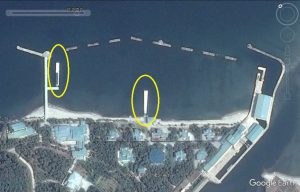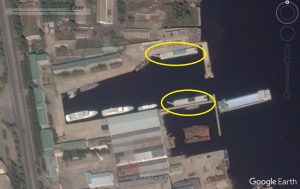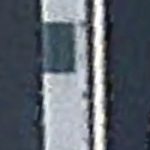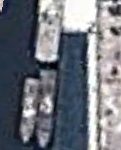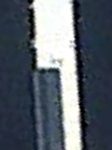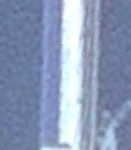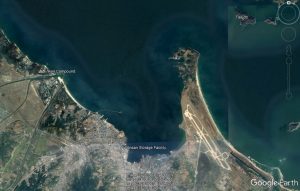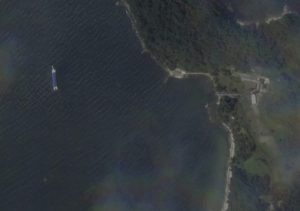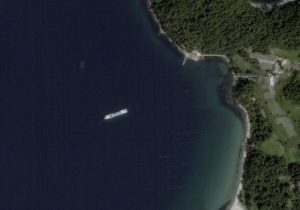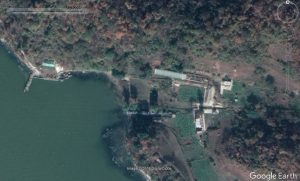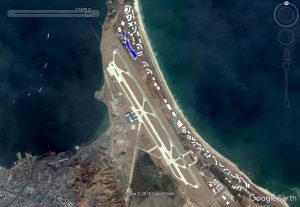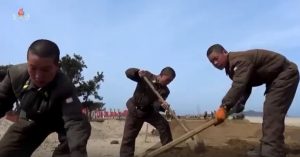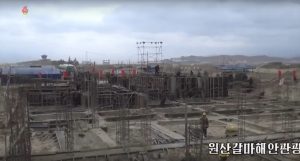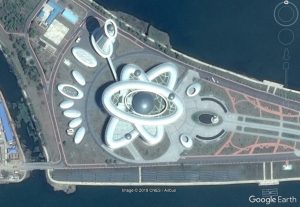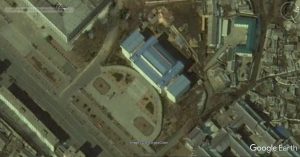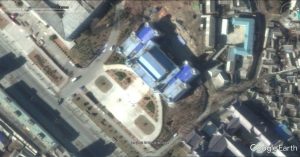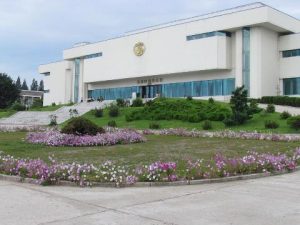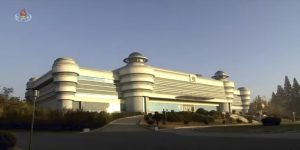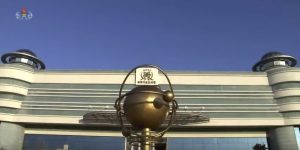By Benjamin Katzeff Silberstein
On April 11th, 2018, North Korea’s rubber-stamp parliament held a session in Pyongyang. Some news media has focused on Kim Jong-un’s absence from the session, but some interesting reporting on the economic situation came out of the session as well. Here are the key points on the economy (from KCNA on April 12th, with my annotation and emphasis added):
Deputy Pak Pong Ju, premier of the Cabinet, delivered a report on the fulfillment of the work of the Cabinet for Juche 106 (2017) for carrying out the five-year strategy for national economic development and its tasks for Juche 107 (2018) at the Sixth Session of the 13th Supreme People’s Assembly held on Wednesday.
Last year was a year of great victory in which a great progress had been made in carrying out the five-year strategy for the national economic development under the outstanding and seasoned guidance of the respected Supreme Leader Kim Jong Un, repelling unprecedentedly grave challenges stemming our advance, the reporter said.
According to the report, last year the Cabinet organized a drive for putting the nation’s overall economy on a higher stage with a main emphasis put on revitalizing the production by locally producing equipment, raw and other materials on the principle of self-support and self-sufficiency while focusing the state efforts on augmenting the foundation for electricity production, rounding off the system of Juche iron production and realizing the independence of chemical industry in line with the five-year strategy for national economic development set forth by the Party.
Note the emphasis here on local production, the expansion of which has been a key policy under Kim Jong-un.
The achievements made last year, a year of crucial importance in carrying out the five-year strategy for national economic development, proved once again that no desperate sanctions and pressure moves of the U.S. and its vassal forces to destroy the sovereignty of the DPRK and its rights to existence and development can ever check the progress of the Korean people dynamically advancing with firm faith in the validity of their cause and its final victory under the wise guidance of the Party and that the cause of building a powerful socialist country is sure to be accomplished.
Saying that this year we are faced with the tasks to make a breakthrough of revitalization in the economic front as a whole while frustrating the challenges of the hostile forces, who are making last-ditch efforts, through all-people offensive under the militant slogan of “Let us launch a revolutionary general offensive to achieve fresh victory on all fronts of building a powerful socialist country!”, the reporter specified them.
The fighting goals for the third year of the five-year strategy for national economic development should be attained without fail with a firm hold on the key tasks of strengthening the independence and Juche character of the national economy and improving the standard of people’s living.
The power industrial sector should put defective generating equipment into good shape and reinforce them, take scientific and technological measures for lowering the standard of coal consumption at thermal power plants and put the operation of generating equipment additionally installed at the Pukchang Thermal Power Complex on a normal track and thus increase the electricity production with the use of thermal power source onto a high stage.
The emphasis on independent electricity consumption makes a lot of sense, particularly as North Korea’s oil and fuel imports are being squeezed. But it’s a problem going back much, much further than the past year’s sanctions.
The coal industrial field should attain the monthly and quarterly coal production goals and create more coal fields so as to fully meet the demand for coal increasing in different sectors of the national economy.
Note: the national economy. The dependence on revenues from coal exports has been a problem, and one side-effect of sanctions may be that domestic industries get access to more and cheaper coal.
In the field of metal industry, Korean-style Juche-based iron making production system should be further perfected by the use of oxygen heat blast furnace and efforts be put into improving the quality of steel and diversifying the kinds of steels through introduction of advanced technologies so as to fully meet the demand for iron and steel of the national economy.
Again, national economy. Diversification is also an important and long-standing goal, and North Korea has long sought to not just export raw materials, but manufacture and sell more of end-products as well.
The field of chemical industry should unconditionally hit the fertilizer production target to timely provide nitrogenous fertilizer to the agricultural field ahead of farming processes. The production at the February 8 Vinalon Complex should be invigorated to fully supply various chemical products including vinalon, caustic soda and vinyl chloride to various sectors of the national economy.
Vinalon…Good luck.
Along with the establishment of various catalyst production bases, the construction of main production processes should be pushed forward at the Sunchon Phosphate Fertilizer Factory and the process for production of carbonate of soda with glauberite as starting raw material should be renovated and perfected.
The machine industrial sector has to step up the modernization of machine factories, unconditionally hit the target for production of tractors and trucks and put the quality of machinery on the world level.
Advanced mining methods should be widely introduced to increase the production of minerals and nonferrous metal.
The railway transport sector should ensure in a responsible manner the transportation of materials necessary for various sectors of the national economy and capital construction projects.
The Cabinet will bring about a remarkable turn in improving the standard of people’s living through production surge in the fields of light industry, agriculture and fisheries this year.
Equipment and production processes should be rearranged on a manpower-saving and electricity-saving basis, diverse and quality light industrial goods produced on a larger quantity with locally available raw and other materials, and local economy should be developed in a peculiar way with reliance on the domestic resources.
High-yielding farming methods should be positively introduced and the proportion of farm work done by machines should be drastically increased to attain the grain production goal for this year without fail.
The fisheries field should unconditionally hit the fish production target and at the same time finish the construction of projects for consolidating the material and technical foundation of fisheries ahead of schedule.
Big efforts should be directed to sprucing up Samjiyon County into a standard and model county under socialism and the construction of the Wonsan-Kalma coastal tourist area should be finished within specified date. And such capital construction projects as the Tanchon Power Station and the second-phase waterway project in South Hwanghae Province should be pushed forward.
The rate of rooting of saplings should be ensured at more than 90 percent through efficient tree planting and meticulous cultivation of planted trees and the appearance of the country be bettered through the technical renovation and repairing of highways and tourist roads in a qualitative way and the rearrangement of key rivers and streams based on an all-people movement.
All the sectors and units should solve the sci-tech problems arising in completing the domestic production of materials and equipment and the structure of self-supporting economy with firm reliance on science and technology.
The reporter stressed that the Cabinet and other state economic guidance organs would work out in a practical way an operation plan for hitting this year’s targets and push forward its implementation in a responsible manner through skillful operation and command to successfully attain the fighting goals set forth by the Party and thus fully discharge their responsibility and duty in glorifying this year marking the 70th anniversary of the DPRK as a year of victory to be specially recorded in the history of the country.
I don’t have time to add more commentary right now, but will hopefully be able to return to this later. Below is KCNA’s rendition of the state budget report on last year and this year and there’s lots of interesting stuff to discuss here:
Deputy Ki Kwang Ho, minister of Finance, made a report on the fulfillment of state budget for Juche 106 (2017) and on the state budget for Juche 107 (2018) of the DPRK at the 6th Session of the 13th Supreme People’s Assembly held on Wednesday.
According to the report, last year the state budgetary revenue plan was over-fulfilled by 1.7 percent or 4.9 percent increase from the previous year.
The local budgetary revenue plan was carried out at 100.5 percent.
Last year the state budgetary expenditure plan was carried out at 99.8 percent.
15.8 percent of the total expenditure was earmarked for the increasing of the military capabilities of the country and 47.7 percent for the development of the national economy.
Investment in the field of science and technology increased 8.5 percent as over the previous year, thus contributing to settling the scientific and technological problems arising in the economic development and to accomplishing the tasks for studying ultra-modern field.
5.2 percent more fund was allocated to key sectors of the national economy and for the improvement of people’s livelihood than the previous year, thus actively promoting the drive for putting power, coal, metal, chemical, machinery and light industrial fields on a Juche basis and updating their production processes. In particular, it helped build a Korean-style oxygen heat blast furnace at the Kim Chaek Iron and Steel Complex and attain the goal of producing new type tractors and trucks.
2.6 percent more investment was made for the construction field than the previous year, while 36.3 percent of the total expenditure was directed to facilitating the building of a highly-civilized socialist power, thus contributing to the implementation of the Party’s policies of prioritizing the education and health care and to the development of sports and literature and arts.
According to the report, the state budgetary revenue and expenditure for this year have been shaped in such a way as to carry out the five-year strategy for the national economic development.
The state budgetary revenue envisages 3.2 percent increase over last year, of which the transaction tax, key item of the budgetary revenue, is expected to swell 2.5 percent while the profits from state enterprises is expected to grow 3.6 percent, to hold 85.3 percent of the total revenue.
The income from cooperative organizations is expected to grow 0.9 percent, the real estate rent 1.8 percent, the social insurance fee 1.2 percent, while the revenue from property sales and price differences is to grow 0.5 percent and other revenue 0.8 percent. The revenue from economic trade zones is expected to increase 2.5 percent.
The central budgetary revenue out of the state budgetary revenue stands at 73.9 percent which means that the revenue from the central economy holds an overwhelming proportion. Provinces, cities and counties are expected to balance expenditure with their own revenue and contribute lots of funds to the central budget.
The state budgetary expenditure is to grow 5.1 percent over last year’s.
An investment in strengthening the independence and Juche character of the national economy and improving the standard of people’s living will increase 4.9 percent as against last year and thus relevant fund will go to 47.6 percent of the total expenditure.
An investment in the field of science and technology will increase 7.3 percent.
Expenditure for the overall national economy including power, metal, coal, chemical and machine industries, railway transport, light industry, agriculture and fisheries will increase 5.5 percent.
The financing necessary for actively promoting the capital construction and further expanding the achievements of forest restoration campaign will swell 4.9 percent.
5.9 percent more fund will go to the education field, 6 percent more fund to public health, 5.1 percent more to sports field and 3 percent more to literature and art.
15.9 percent of the total expenditure will go to increasing the military capabilities for self-defence.
This year also, lots of educational aid fund and stipends will be sent for the children of Koreans in Japan.
The reporter said that the state budget for this year will be successfully carried out through meticulous organization of economic operation and command and thus financially back the building of a powerful socialist country.
(UPDATE 4-15-2018: Korean original for the budget report added below, date fixed above):
지난해 국가예산집행의 결산과 올해 국가예산에 대한 보고
(평양 4월 12일발 조선중앙통신)
11일에 진행된 최고인민회의 제13기 제6차회의에서 조선민주주의인민공화국 주체106(2017)년 국가예산집행의 결산과 주체107(2018)년 국가예산에 대한 재정상 기광호대의원의 보고가 있었다.
보고에 의하면 지난해 국가예산수입계획은 101.7%로 수행되였으며 전해에 비하여 104.9%로 장성하였다.
지방예산수입계획은 100.5%로 수행되였다.
지난해 국가예산지출계획은 99.8%로 집행되였다.
나라의 군력강화에 지출총액의 15.8%를 돌렸으며 인민경제발전에 지출총액의 47.7%를 돌리였다.
과학기술부문에 대한 투자를 전해에 비하여 108.5%로 늘여 경제발전에서 제기되는 과학기술적문제들을 해결하고 첨단분야의 연구과제를 완성하는데 기여하였다.
인민경제의 중요부문과 인민생활향상에 전해에 비하여 105.2%로 늘어난 자금을 지출하여 전력,석탄,금속,화학,기계,경공업부문의 주체화와 생산공정의 현대화를 적극 추동하였으며 특히 김책제철련합기업소에 우리 식의 산소열법용광로를 건설하고 새형의 뜨락또르와 화물자동차생산목표를 점령하는데 이바지하였다.
건설부문에 전해에 비하여 102.6%로 투자를 늘이였다.
사회주의문명강국건설을 앞당기는데 지출총액의 36.3%를 돌려 당의 교육중시,보건중시정책을 관철하고 체육과 문학예술을 발전시키는데 이바지하였다.
보고에 의하면 올해 국가예산은 국가경제발전 5개년전략수행의 요구에 맞게 국가예산수입과 지출을 편성하였다.
국가예산수입은 지난해보다 103.2%로 장성할것으로 예견하였으며 그가운데서 예산수입의 기본항목인 거래수입금은 102.5%로,국가기업리익금은 103.6%로 늘어나 수입총액의 85.3%를 차지할것으로 보았다.
협동단체리익금은 100.9%,부동산사용료는 101.8%,사회보험료는 101.2%,재산판매 및 가격편차수입은 100.5%,기타수입은 100.8%,경제무역지대수입은 102.5%로 늘어나게 된다.
국가예산수입에서 중앙예산수입은 73.9%로서 중앙경제에 의한 수입이 압도적비중을 이루며 도,시,군들에서 자체의 수입으로 지출을 맞추고 많은 자금을 중앙예산에 들여놓을것으로 예견하였다.
국가예산지출은 지난해에 비하여 105.1%로 장성하게 된다.
인민경제의 자립성과 주체성을 강화하고 인민생활을 개선향상시키기 위한 투자를 지난해에 비하여 104.9%로 장성시켜 지출총액의 47.6%에 해당한 자금을 돌리게 된다.
과학기술부문에 대한 투자를 107.3%로 늘인다.
전력,금속,석탄,화학,기계공업과 철도운수,경공업,농업,수산업을 비롯한 인민경제전반에 대한 지출을 105.5%로 늘인다.
중요대상건설을 적극 추진하고 산림복구전투의 성과를 더욱 확대해나가는데 필요한 자금보장을 104.9%로 늘이게 된다.
교육부문에 105.9%,보건부문에 106%,체육부문에 105.1%,문학예술부문에 103%로 투자를 늘인다.
자위적국방력을 강화하는데 지출총액의 15.9%를 돌리게 된다.
올해에도 재일동포자녀들을 위하여 많은 교육원조비와 장학금을 보내준다.
보고자는 경제작전과 지휘를 빈틈없이 짜고들어 올해 국가예산을 성과적으로 집행함으로써 사회주의강국건설을 재정적으로 안받침해나갈것이라고 강조하였다. (끝)

